The content of the article
The fragrant autumn fruit - Japanese quince - is rich in vitamins and nutrients to promote health. Due to the tannins and natural acids contained in it, quince copes with catarrhal and heart diseases, helps relieve inflammation and swelling, and effectively cleans the intestines. In addition, the fruit is simply delicious and has a unique delicate aroma, and desserts from it delight with its tenderness and richness.
How to use the quince tincture
Many ailments can be cured with alcohol infusions - alcoholic compounds help healing plant substances quickly absorbed into the bloodstream, warm up the body and promote quick healing. Therefore, tincture of quince is a useful drug for the winter to strengthen the body and treat ailments.
Enjoy refined alcohol and gourmet - sweet yellow drink has a very pleasant soft and pungent taste, leaving a unique impression. This bright topping liquid can decorate more than one festive cocktail. Preparing the tincture in late autumn, when ripe fruits of Japanese quince appear, you can provide an exquisite drink of the New Year’s and the Christmas table, as well as treat your loved ones for Valentine’s Day.
Quince liqueur can be drunk whole, diluted, and in addition it will be a great addition to desserts: use the tincture as an impregnation for biscuits, filling milky-cream desserts, and also as a filling for chocolates.
How to cook a delicious quince liqueur
To get a concentrated dessert drink with a lot of health benefits, take 1 kg of ripe quince, 300 g of sugar, a package of vanilla, several clove blossoms (5-6 knots) and good purified vodka.
The billet should be poured with sugar and vanilla, add a clove and place in a clean three-liter jar. Next, the mixture is poured with alcohol and rolled metal cap. It is necessary to maintain the liqueur for at least a month, then strain from the fruit residue and pour into bottles.
Good advice: the fruit residue after straining liqueurs and liqueurs can be used to make chocolates like Arcadia or Southern Night.
Baked fruit liqueur
An amazing dessert drink for the New Year's table will be liqueur made from baked quince with apples and spices. The drink turns out very cozy and warming, is drunk gently and with pleasure.
You will need:
- 3 fragrant apples (fuji, idared or other red autumn variety);
- 3 large quinces;
- 2-3 flowers of carnations;
- 1 stick of cinnamon;
- 2 whole orange peel crusts, about 6-8 cm each;
- 0.75 liters of brandy or fruit brandy to your taste;
- 0.25 liters of water;
- 450 grams of sugar.
Fruits need to be washed and cleaned from the seeds and impurities. Cut into small slices and place in an oven preheated to 190 degrees on a baking sheet covered with parchment. Baked fruit until soft - about 30-35 minutes.In the process of cooking, it is necessary to turn over or shake the slices 1-2 times for even baking.
As long as the fruit is suitable, you need to brew a syrup of sugar and water, it is enough to boil it for 1 minute. After that, the finished fruit is transferred to a suitable jar, add spices and zest and pour them with syrup. After the mixture has cooled, it is poured with brandy to cover the fruit, cover and leave to stand for 2 weeks, shaking every 2-3 days.
Ready liqueur must be filtered through a sieve or cheesecloth, and then filtered. Store the drink in the refrigerator in clean bottles. And here's another nice easy recipe - a sparkling cocktail for the holiday:
- 0.45 liters of liqueur from baked fruit;
- 0.15 liters of lemon juice;
- Brut (any dry sparkling wine).
The fruit base must be placed in a champagne glass and the contents must be filled with sparkling wine - to the top. Gently stir and garnish the cocktail with a slice of lemon or spiral of zest.
Sweet fragrant quince tincture
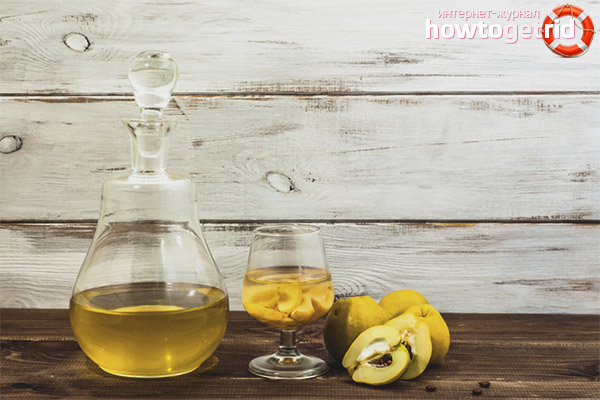
There is a less strong recipe for fruit alcohol. To do this, you will need 2.3 kg of quince, 2 kg of sugar, 1.5 liters of high-quality vodka and 3 liters of purified water. Ideal for soft spring water or bottled.For cooking you will need a capacity of 10 liters.
Quince must be washed and freed from the hearts. Make sure that the volume of the product is not significantly reduced. By the weight of the core, they occupy about 1/10 of the fruit, prepare quinces with a margin if the fruits are small and the output of the products is greatly reduced. Peeled fruits are cut into thin slices and sent from a large vessel. Next, pour quince sugar, shake the contents well - and give the fruit to run the juice. After 6-10 hours, the syrup is poured with alcohol and water, mixed thoroughly to achieve uniformity, tightly closed, and left to stand in a dark place for about 1.5 months. Periodically, the drink should be shaken to even infusion.
Take the tincture carefully, remember that the beneficial effect of alcohol on the body occurs only when it is consumed moderately. For therapeutic and prophylactic purposes, as well as for pleasure, liqueur or tincture can be drunk in small portions - 30 g 1-2 times a week.
What is useful alcoholic drink from quince
Alcohol tincture of quince will improve blood circulation, help to overcome hypertension, remove edema, relieve fatigue with varicose veins. Improve appetite, relieve nervous tension and stimulate healthy sleep. Quince liqueur will also help to clean the intestines, will have choleretic and slimy effects and help to heal irritations.
Choose healthy strong drinks and spend the winter cozy.
Video: quince tincture - recipe and cooking technology

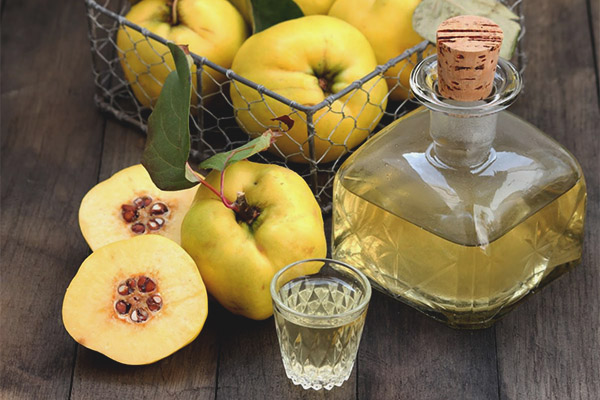
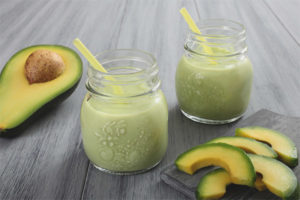
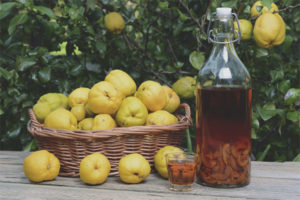
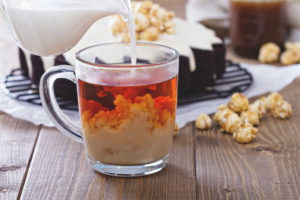
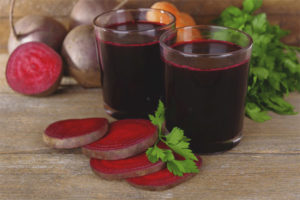
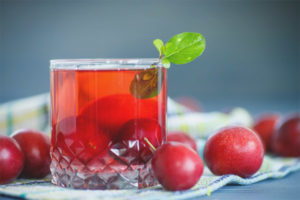
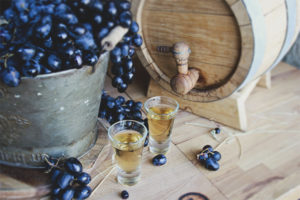
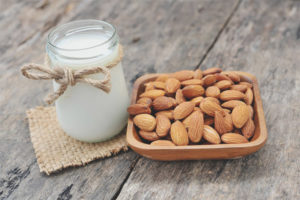
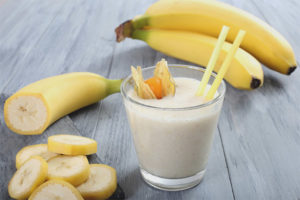
To send